A Russian ‘Inspector’ Satellite Is Chasing an American Spy Satellite Across the Sky
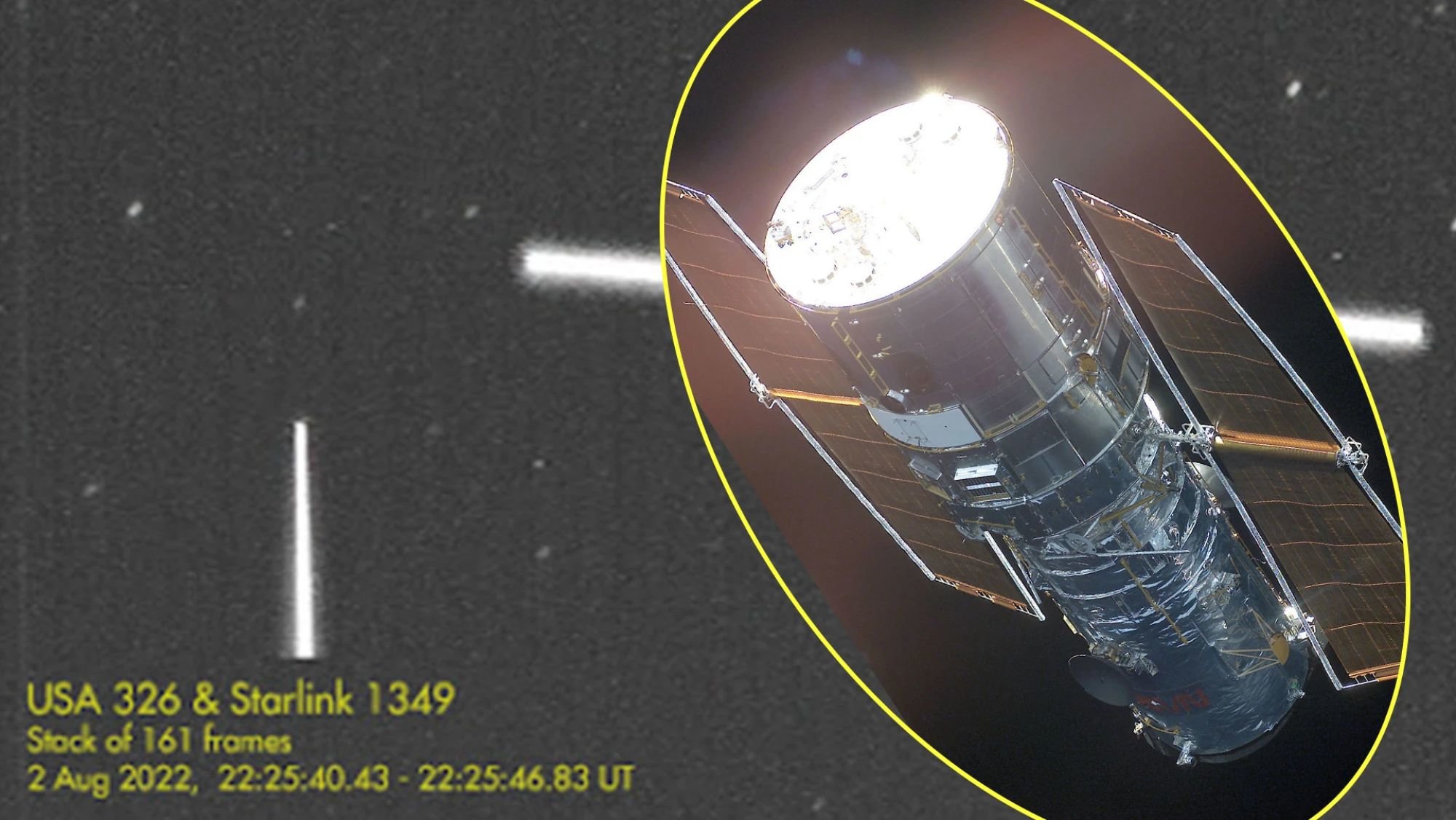
Russia launched a "inspector" satellite — a spy satellite that spies on other spy satellites — last week just as one of the US's newest secret satellites passed directly overhead. The Russian ship has been stalking the American ship ever since. Photo from NASA, satellite images from , composite by Coffee or Die Magazine.
A Russian satellite is stalking a secret US spy satellite and may have passed suspiciously close to the classified American ship Thursday, Aug. 4.
The Russian satellite — dubbed Kosmos 2558 by satellite watchers — launched on Monday from the Plesetsk Cosmodrome, 500 miles north of Moscow, just as a new US spy satellite — USA 326 — passed overhead. The Russian ship blasted off directly into the same orbital plane as USA 326 and has been closing in on the American satellite since.
In a blog post, Marco Langbroek, who specializes in spy satellite research and lectures at Delft Technical University, said the Russian satellite’s orbit was a giveaway of its intention.
“[Kosmos 2558] was launched into virtually the same orbit as USA 326, launching right at the moment that the orbit of USA 326 passed over Plesetsk,” Langbroek told Coffee or Die Magazine. “That is too much of a coincidence.”
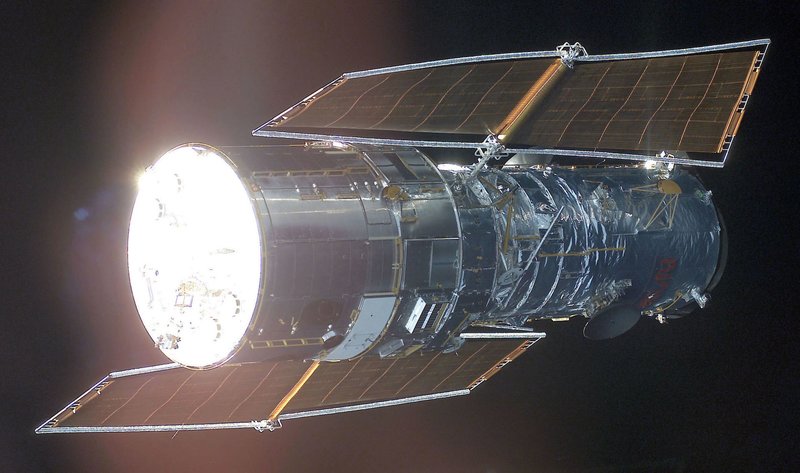
The Hubble Space Telescope, photographed from the Space Shuttle Columbia on March 3, 2002. Experts believe modern US spy satellites have designs and capabilities similar to the Hubble. With a 2.4-meter-wide main mirror, the Hubble could theoretically see objects as small as 30 centimeters — roughly the size of a shoebox — if pointed at the Earth. NASA Photo.
Langbroek suspects Kosmos 2558 is an “inspector” satellite — or a spy satellite designed to spy on other spy satellites. At its closest, Langbroek said, Kosmos 2558 would be closer than 50 miles away from USA 326 — a virtual fly-by in space terms. One of the satellites could have maneuvered out of the close encounter in the hours beforehand, but they hadn't by mid-Wednesday, Langbroek told Coffee or Die.
But researchers will only be able to tell what happened once their decentralized network of independent space observers get their eyes on USA 326 again. “Unfortunately, I was clouded out last night (and looks like I will be tonight as well), but I hope one of our other observers might capture it,” Langbroek said.
A spokesperson for US Space Command told Coffee or Die Magazine that officials there would not be releasing analysis of the fly-by.
US military satellite USA 326 and Russian military satellite KOSMOS 2558 (launched into the same orbital plane as USA 326), filmed on 2 August 2022, passing 30 minutes after each other.
From Leiden, the Netherlands, with a WATEC 902H2 Supreme + Pentax 1.2/50 mm lens
Assuming Kosmos 2558 is equipped with a powerful camera, it will likely get very detailed images of its US quarry from within 50 miles.
For comparison, USA 326 does its Earth-facing spying from about 280 miles above the surface, and its cameras and equipment must contend distortion caused by the Earth’s atmosphere. Still, experts believe modern American spy satellites — known as KH-11s or KH-12s — can see objects on the ground as small as 10 centimeters across under optimal conditions.
But shooting in the void of space, Kosmos 2558’s view of USA 326 will be crystal clear.
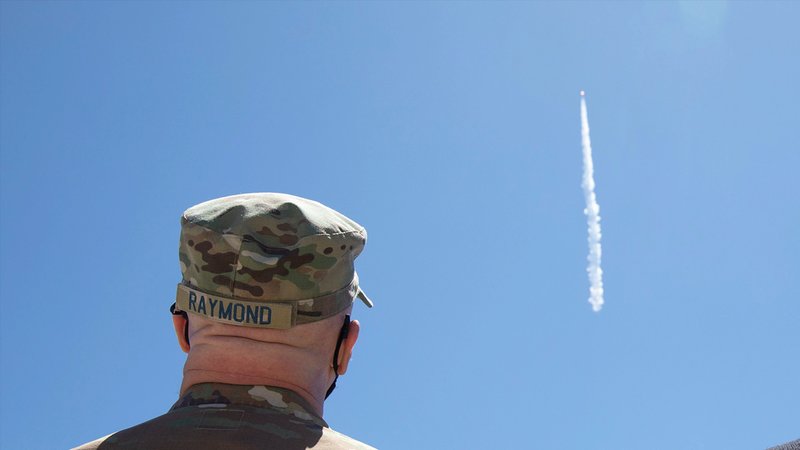
Chief of Space Operations Gen. John Raymond watches as the National Reconnaissance Office Launch-82 vehicle lifts off at Vandenberg Air Force Base, California, April 26, 2021. A satellite known as USA 326 lifted off from Vandenberg in February of 2022. US Air Force photo courtesy of the 94th Airlift Wing.
Jonathan McDowell, an astrophysicist at the Harvard-Smithsonian Center, agreed that the Russian satellite’s path seemed deliberately chosen. He also told Coffee or Die Magazine, “[Kosmos 2558] has several things in common with another Russian inspector satellite launched in 2019 (same launch vehicle, same manufacturer, same design).”
In early 2020, Russian satellite Kosmos 2542 and subsatellite 2543 came suspiciously close to American spy satellite USA 245. At the time, Gen. John “Jay” Raymond, the highest-ranking military leader in the Space Force, told Time, “We view this behavior as unusual and disturbing. It has the potential to create a dangerous situation in space.”
But McDowell doesn’t think today’s close pass is a big deal. “I don’t think it actually matters a lot, but the US Defense Department is likely to get all huffy about it,” he said.
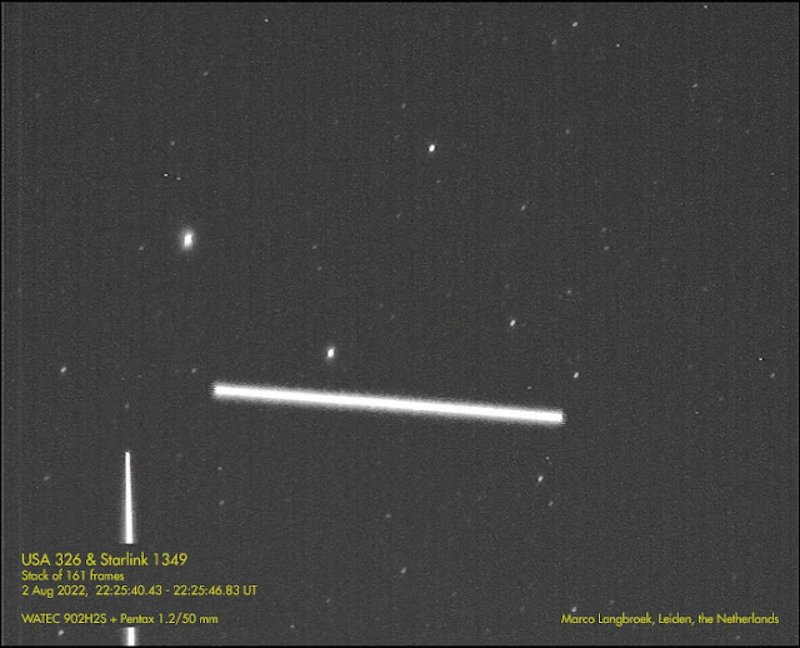
In a time-lapse photo taken by Dr. Marco Langbroek, the spy satellite known as USA 326 streaks across the sky next to another trail left by a Starlink internet communications satellite, the commercial internet provider launched by Elon Musk. Photo courtesy of StarTrackCam Leiden Blog by Dr. Marco Langbroek.
“[The US government doesn’t] really have a right to complain because there’s no rule against it,” McDowell told Gizmodo. If the Russian satellite risks collision, then that’s different. “At what point are you in another satellite’s personal space? That’s the question,” he said.
A Space-X Falcon 9 rocket launched USA 326 from Vandenberg Space Force Base in California on Feb. 2, 2022.
Langbroek said little else was known about the US satellite. “But from the type of orbit it is in and its orbit relative to other satellites we believe to be optical reconnaissance satellites, we are quite certain that it is an electro-optical reconnaissance satellite,” he said. These satellites take detailed images of Earth.
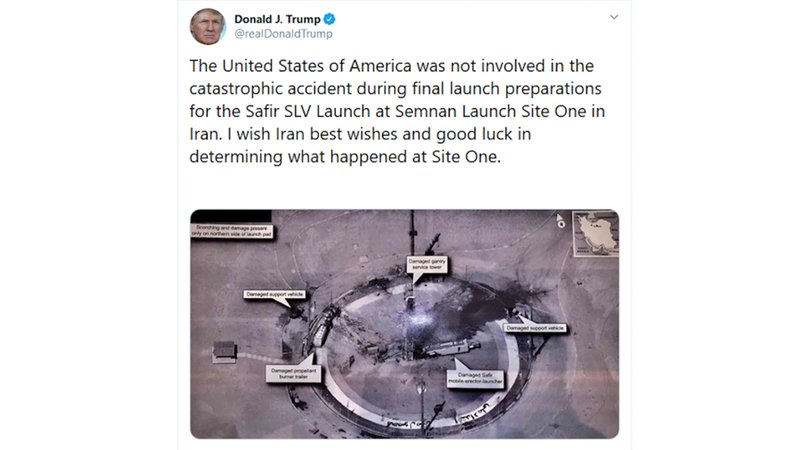
Screenshot via Twitter.
Spy satellites like USA 326 observe Earth to collect information for intelligence and military purposes. The National Reconnaissance Office, or NRO, is the agency within the Department of Defense that operates America’s spy satellites. Though the designs of spy satellites have always been among the most closely guarded of all military secrets, modern ones are thought to be built as giant telescopes that, rather than peering into space, face back toward Earth, with mirrors more than 2 meters wide, on par with the power of the Hubble Space Telescope.
Still, images from the secret spy machines sometimes surface.
President Donald J. Trump famously tweeted a picture from a US spy satellite — which he appeared to capture on a phone camera from a printed copy — in 2019 after it snapped images of the aftermath of an Iranian missile that exploded on a launchpad.
READ NEXT: After Chance Meeting on a Plane, 2-Star General Speaks at Private’s Basic Training Graduation
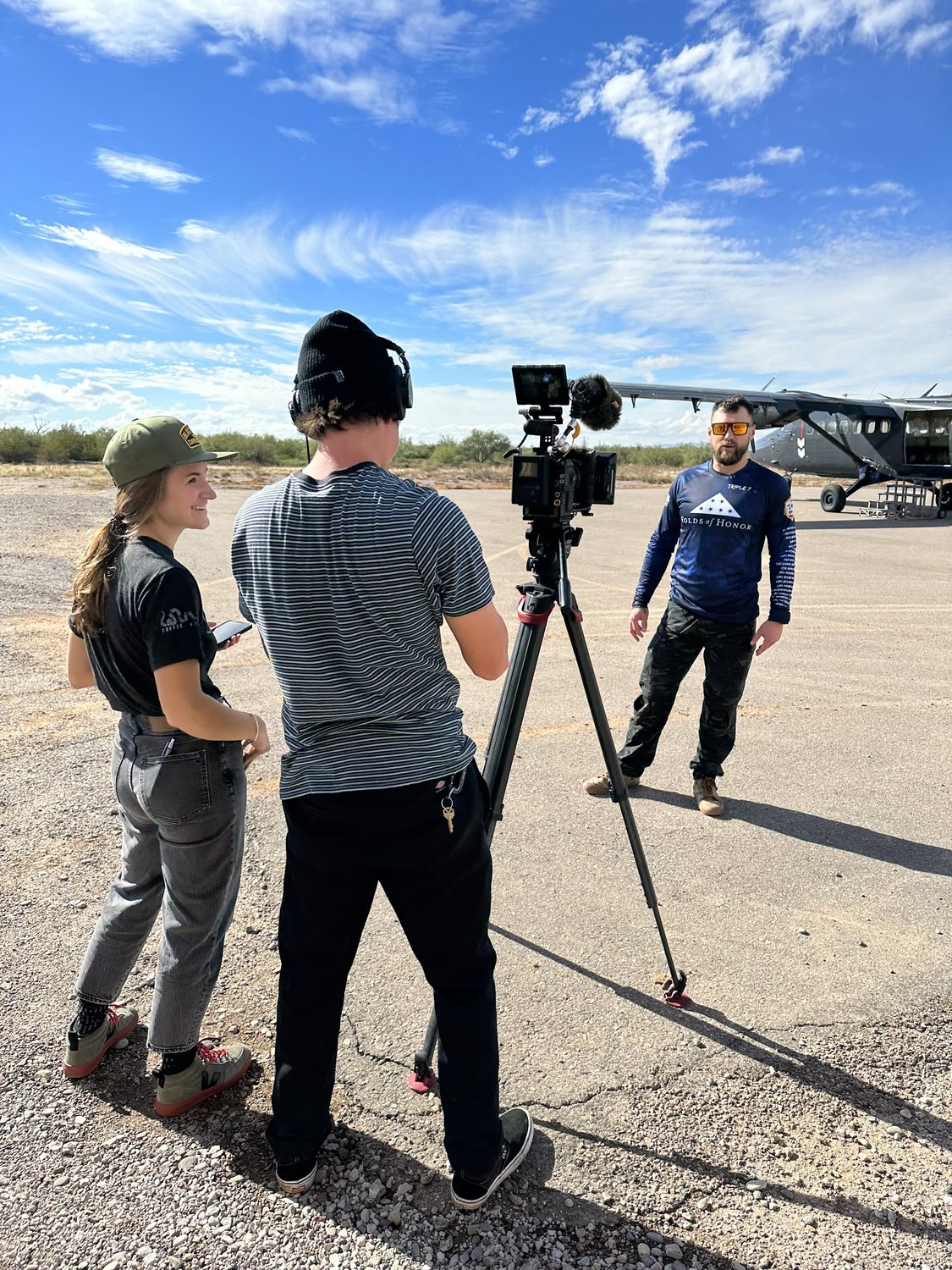
Jenna Biter is a staff writer at Coffee or Die Magazine. She has a master’s degree in national security and is a Russian language student. When she’s not writing, Jenna can be found reading classics, running, or learning new things, like the constellations in the night sky. Her husband is on active duty in the US military. Know a good story about national security or the military? Email Jenna.
BRCC and Bad Moon Print Press team up for an exclusive, limited-edition T-shirt design!
BRCC partners with Team Room Design for an exclusive T-shirt release!
Thirty Seconds Out has partnered with BRCC for an exclusive shirt design invoking the God of Winter.
Lucas O'Hara of Grizzly Forge has teamed up with BRCC for a badass, exclusive Shirt Club T-shirt design featuring his most popular knife and tiomahawk.
Coffee or Die sits down with one of the graphic designers behind Black Rifle Coffee's signature look and vibe.
Biden will award the Medal of Honor to a Vietnam War Army helicopter pilot who risked his life to save a reconnaissance team from almost certain death.
Ever wonder how much Jack Mandaville would f*ck sh*t up if he went back in time? The American Revolution didn't even see him coming.
A nearly 200-year-old West Point time capsule that at first appeared to yield little more than dust contains hidden treasure, the US Military Academy said.












